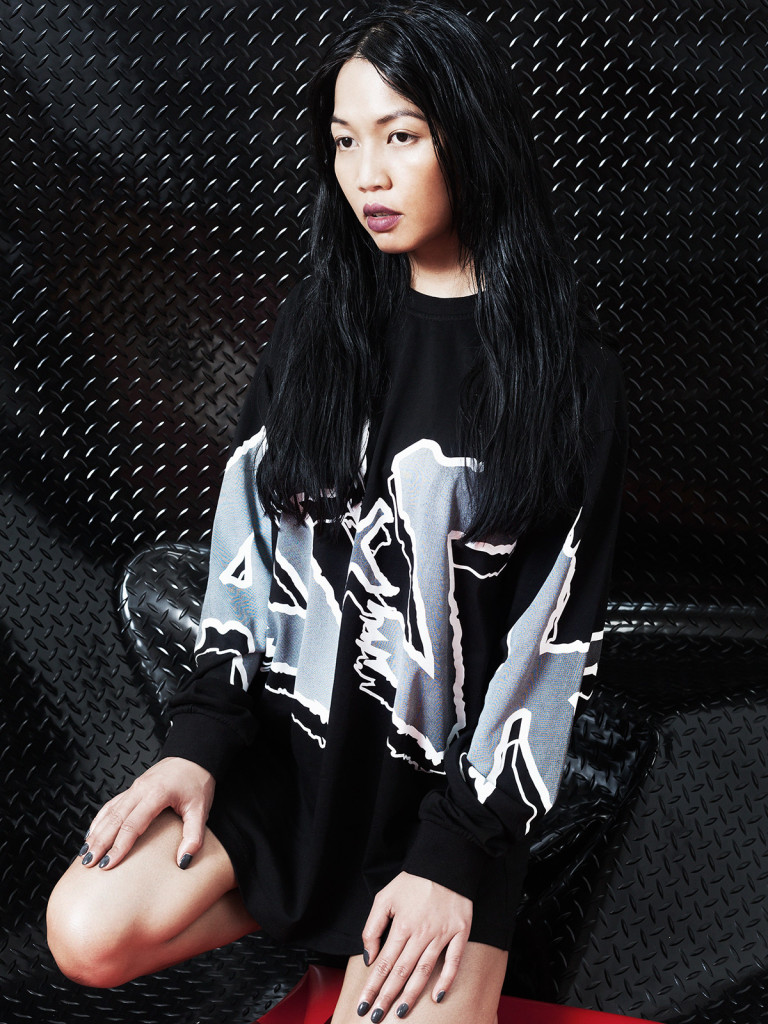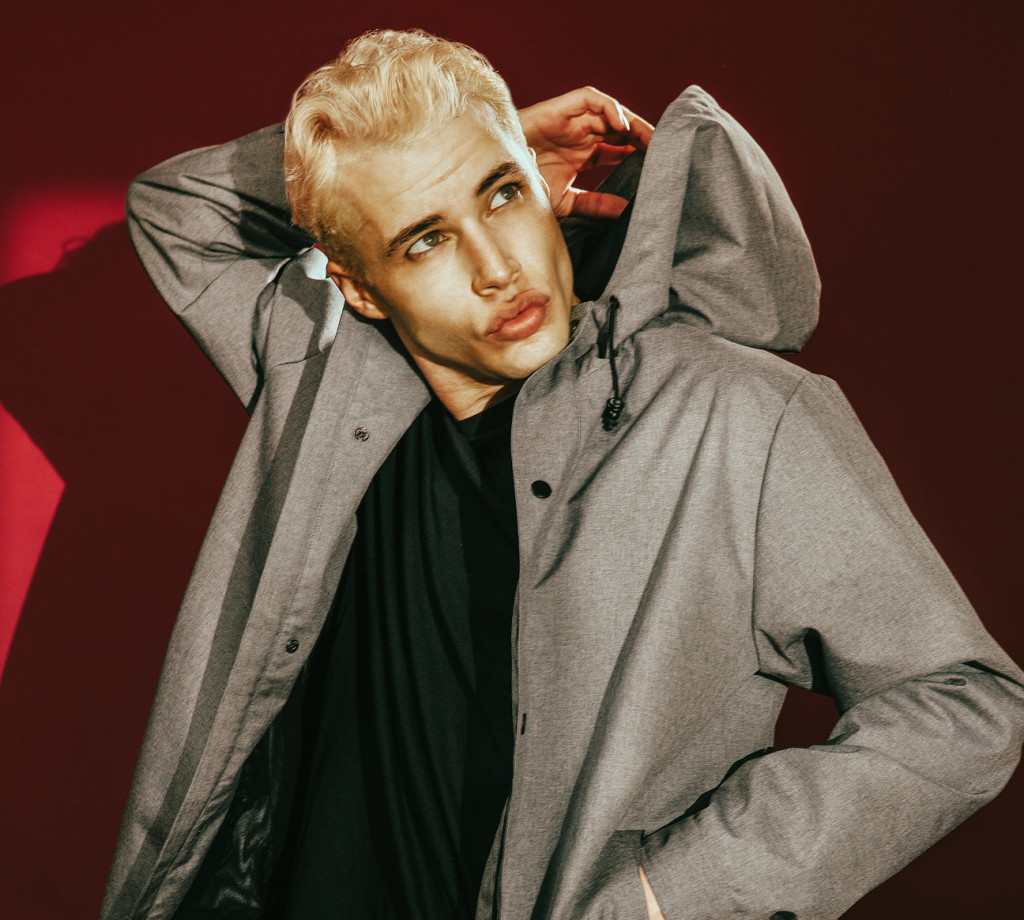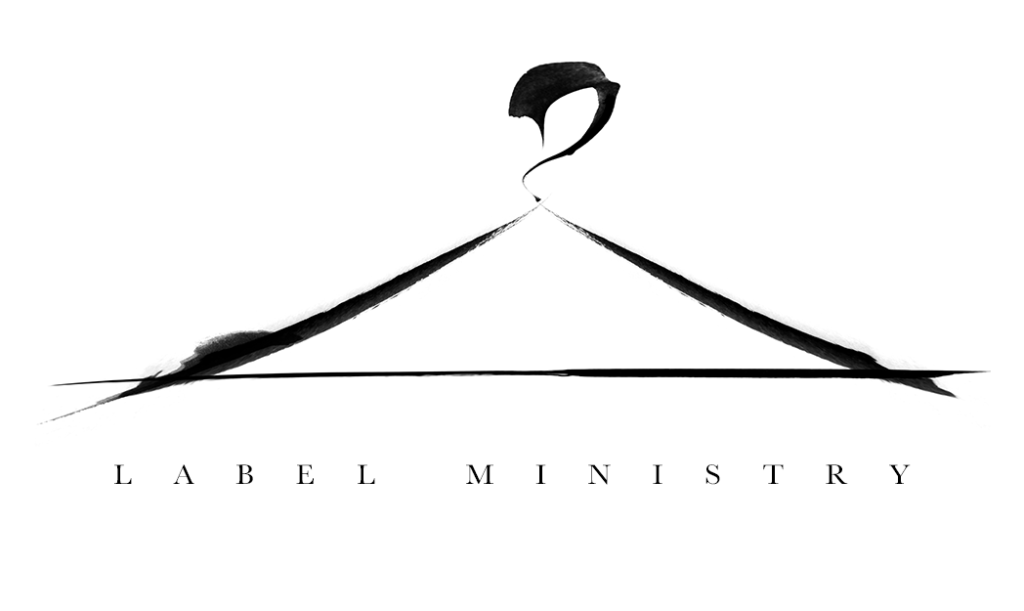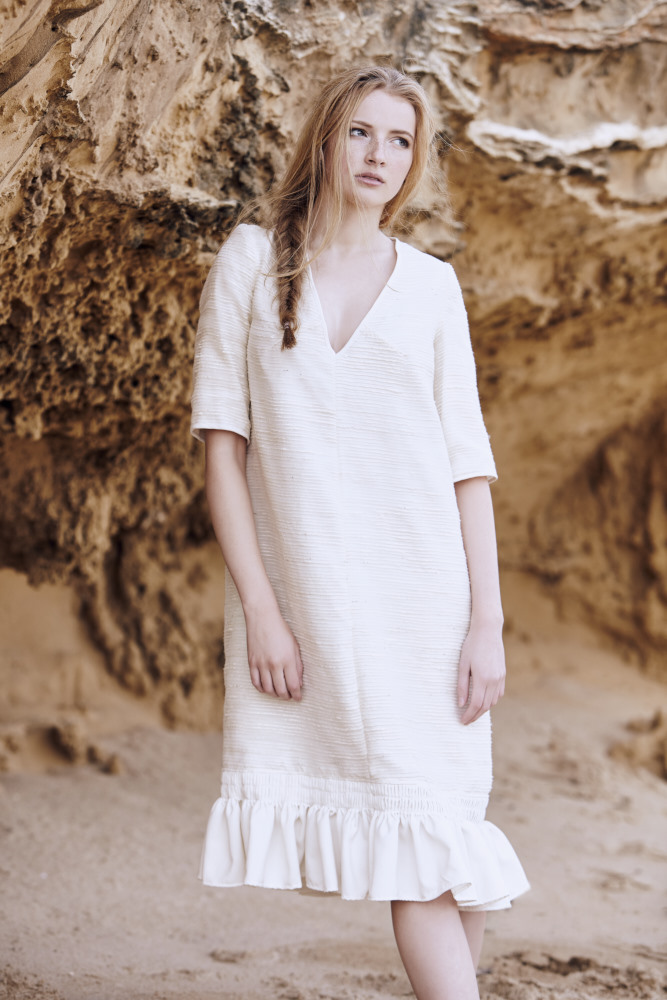
Tatyana Designs
Runways are crucial to the development of fashion. They illustrate a moment in time, a shift in trends, a certain look, they reflect the current culture and they represent who we are. It’s not just a string of clothes on a catwalk – it’s a story. Runways are stories, and they’re special.
Claire Goldsworthy, The Fashion Advocate.
It’s that time of year again. VAMFF is here. The Virgin Australia Melbourne Fashion Festival is fast approaching and the city of Melbourne and fashion devotees from far and wide make their way to the eighteen day long festival. As tribute to this years festival the star of this article is Claire Goldsworthy. A girl after my own heart.
She is the passionate fashionista and founder of the print and digital magazine, The Fashion Advocate and the creator of the collaborative brainchild, The Dress Collective. A collective of emerging Australian designers who manufacture their product in Australia.
This year Claire is at the helm. The Fashion Advocate Runway is a hand-picked collection of emerging Australian designers from around the country. As a vocal and passionate advocate of Australian fashion myself, this runway is one not to be missed by virtue of the fact that its focal point is Australian designers who manufacture in Australia.
Contrary to popular belief there are many emerging and established designers who still manufacture in Australia. In my opinion we should all be following them with great interest, applauding their ethics and moral values, and then setting aside our fashion budget to committing to buying their product, thus supporting their work, and most importantly keeping them in business.
Claire Goldsworthy describes “fast fashion” as “The dirty F-word”! I couldn’t agree more!
Why do we buy fast, dirty, cheap, badly made, unethically produced, highly pollutive fast fashion? Designs that are all too often ripped off from the world’s top designers?? If you have the answer, please let me know, because I am totally miffed as to why these fast fashion giants have such an enormous share of our fashion market. I have written many an article about supporting local Australian fashion and all of you who follow me (God love you all!), well know my opinion on this important subject. Some of you may have already read my article on the Zara Phenomenon …
Have we become such lazy and disinterested sheep that we are incapable of thinking for ourselves? Are we so disinterested in our own local fashion market, and our own economy that we have just given up fighting for what is right? Please. Pretty Please. Buy Australian Made Fashion. Support Australian Designers. Vote with your fashion dollar to create much needed change.

Mhoo Mhoo
Anyhow, back to The Fashion Advocate.
Isn’t it just soooo refreshing to find someone who champions the importance of showcasing, supporting, and bringing to the spotlight, Australian designers, who produce sustainable, ethical product and manufacture in Australia.
Meet Claire Goldsworthy. She is. The Fashion Advocate.
Melbourne Entrepreneur. Fashionista. Editor. Founder of The Dress Collective. Runway Curator. Lover of Australian fashion. Gem.
If you would like to attend the The Fashion Advocate Runway on March 11 get in quick because tix are selling fast!
Here is her story.
Until next time,
Jade xx

VAMFF … Book your tix! March 01 – March 19 2017
Fast fashion has no meaning, no purpose, and no value …
Claire Goldsworthy, The Fashion Advocate.
LM
What is the work of The Fashion Advocate?
TFA
The Fashion Advocate is a print and digital magazine dedicated to Australian made fashion, beauty and lifestyle brands, with a focus on ethical and sustainable content.
LM
What has been the major inspiration for your work?
TFA
I wanted to see change. It drives me mad to see the plethora of fast fashion in shopping centres selling for five dollars a piece. How on earth can a garment be made, transported and retailed for five dollars?
It can’t – unless it’s been created under unsustainable and unethical standards. I was sick of seeing fast fashion crap. Sick of the facts and figures that get released every year about the negative environmental impacts of the fashion industry, and sick and tired of seeing the same style top in ten different stores.
It’s robotic.
Fast fashion has no meaning, no purpose, no value.
The inspiration for The Fashion Advocate was my desire for change; I wanted to promote fashion that matters. I wanted to inspire other people to start thinking about the impact of their shopping habits. I launched The Fashion Advocate to support Australian brands who have morals, values and ethics. To introduce consumers to a range of options that they might not otherwise have known about.

‘Blushed’ By Teagan Jacobs
LM
You are a fashion designer yourself. How does that assist you in understanding the difficulties other designers face?
TFA
I launched my own fashion label straight out of high school and worked everything out the hard way from the bottom up. I have a first-hand understanding of the blood, sweat and tears that go into a locally made fashion label because I’ve been there and done that. I’ve since put that label to rest as my aesthetic has changed, but having the first hand experience exposed me to the ups and downs of fashion.
I understand what brands go through. It helps me connect with designers and it’s not a foreign topic; fashion is simultaneously heart-breakingly hard. It conjures up so many different emotions. My experience helps me write about fashion, beauty and lifestyle brands in a personal way because I get it.

HABADAKAS
LM
How much has your own label, Harriette Hill, influenced your own work?
TFA
Although I don’t run the brand anymore, it all started with Harriette Hill… My love of vintage fabrics, traditional sewing techniques and my ethical values all stem from my first brand. When I inherited my great grandmother’s 1950’s and 1960’s fabric collection, I was forced to find ways to make it last and so my journey into sustainability began.
LM
How important do you believe is the unveiling of collections on the runway?
TFA
Runways are crucial to the development of fashion.
They illustrate a moment in time, a shift in trends, a certain look.
They reflect the current culture and represent who we are. It’s not just a string of clothes on a catwalk – it’s a story.
Runways are stories, and they’re special.

Dida
LM
Yes. Yes. Yes!
LM
How was The Dress Collective birthed?
TFA
Much the same as The Fashion Advocate – I wanted to see change. I had always been interested in fashion and over the years, I worked nationally and internationally in retail, brand management, PR and marketing, runway management, creative direction for various brands large and small, and always in fashion.
I was never truly content with working for other brands as their values and ethics didn’t quite align with mine. I launched The Dress Collective in 2015 to make a positive change for the fashion industry. I just couldn’t sit back and watch the damage anymore.
LM
Please describe the role of The Dress Collective?
TFA
The Dress Collective is an online store that sells only 100 per cent Australian made fashion. It’s also 100 per cent transparent and each designers story is attached to every single item we sell, along with the garment’s design and manufacturing origins. The Dress Collective is more than just an online shop for Australian designers though; it’s a support network and creative foundation, built on a vision of positive and sustainable growth for the future of the Australian fashion industry. It doesn’t focus solely on ‘trends’ or seasonal collections, because that can sometimes create the ideal of ‘past season’ or ‘out of fashion’. Instead, The Dress Collective helps consumers make long term decisions about their wardrobe by introducing them to high quality, trans-seasonal and unique labels.
LM
How difficult is it for Australian labels to produce their collections in Australia?
TFA
Contrary to popular belief, quite easy.
The cost is sometimes higher, but we do have a host of high quality manufacturers in Australia. The question though is about values and profit.
Is it difficult to manufacture in Australia? No.
Is it difficult to compete with fast fashion when you manufacture in Australia? Yes.
Local manufacturing can be costly, which drives up the cost of the final garment, but the value is in the ethical benefits of local manufacturing, so it depends on what you value and which part of the production cycle you consider to be more important.

Cameron & James
LM
What do you believe is the greatest challenge facing Australian designers in our current market?
TFA
Fast fashion. The dirty F-word!
People are hungry for unique clothing; the challenge isn’t demand as there’s plenty of that.
It’s the cheap fast fashion that causes a problem, and it starts to desensitise people to the bigger problem. You don’t think much about a twenty dollar top because you’d pay the same for pizza, therefore you’re more likely to throw it away, not care for it, and replace it with another twenty dollar top.
It’s a vicious cycle and it’s a hard one to break. The constant struggle is educating people about the importance of supporting local brands and the play-off between fast and slow fashion is an enormous challenge.
LM
What is your opinion of fast fashion? What do you believe is its future?
TFA
Fast fashion has ruined our industry, globally.
It’s raping and pillaging the earth, killing garment workers and devaluing something that deserves so much more credit and thought. I do believe that people are slowly waking up to the impact of fast fashion and slowly making better choices, but it’s going to take a long time to see a total shift.
I won’t stop fighting for slow fashion though, no matter long it takes.

Sets of Seven
LM
What do you most love about Australian fashion?
TFA
The diversity of it. I know labels that make entire garments out of pompoms, and some that make entire garments out of repurposed jeans. There are so many unique and diverse labels locally. I love it! Australian designers tend to be very self-driven and not focus on global trends too much because of the differences in season and locality compared with the rest of the world.
LM
What are your favourite Australian labels?
TFA
All of the labels I stock online at The Dress Collective!
I hand pick them and they’re all so unique, yet very wearable and practical. Black Mob is incredible – it’s unisex and very vocal about the issues it stands for, I love it. DEVOI is another of my favourites; I absolutely love bright colour and prints, and this label delivers both.

Rayan Ardati
LM
Please share your views on the importance of ethical and sustainable fashion production?
TFA
It’s not even a question for me – you either engage ethical and sustainable practices, or you shouldn’t be running a business. If you are going to offer a product to the world, it is your responsibility to do so in an ethical manner; the harm of people or the environment shouldn’t be something that is gambled in the process. It is so very simple to ensure ethical and sustainable production and something you choose. Every step of the process is a choice for brands. We live in an incredible country and we are so very fortunate; we take it for granted. No-one in Australia would accept the garment factory working conditions or pay that are ‘the norm’ in third world countries. No-one would show up to work in Australia for those conditions. If you wouldn’t accept it for yourself, you shouldn’t accept it for any other person involved in the cycle of your business.
LM
How does VAMFF differ to the other events across the Australian fashion calendar?
TFA
I love VAMFF!
It is such an inclusive, diverse festival that appeals to so many different people from all walks of life. The main fashion week is of course very targeted to your fashion-nuts, but the wider calendar includes beauty events, styling workshops, business seminars, shopping activations, film, photography … there’s something for everyone and I’m all about inclusion and diversity.
LM
I believe you are curating your own show this year at VAMFF – The Fashion Advocate Runway. Please tell us more …
TFA
I am SO excited to be curating this event! I’ve handpicked twelve labels from around the country to showcase the diversity and talent of the Australian fashion industry, and all labels are entirely Australian made.
There tends to be a stigma around Australian made fashion and I’m working endlessly to ensure that the wider public understands the industry. People don’t realise that everything you need in your wardrobe – whether it be corporate attire, lingerie, formal wear, swimwear, sleepwear, whatever – can be bought from designers who manufacture locally. The details have been meticulously planned, from the local cocktails on offer to the gifts in the VIP bags – it’s all about Australian made. I’ve partnered with Luna Park too; I’m honoured to be hosting an event at such an iconic and historic venue, it all ties in with the message of valuing local, our roots and delving deeper into everything we buy, wear and engage with.
It’s going to be a very special event!
LM
And indeed it will be! The designers are …
Habadakas, Tatyana Design, Vincent Li, Diida, p’junk by Kate Hannah, Oroceo Castro, Lorenza The Label, Rayan Ardati, Cameron & James, Mhoo Mhoo, Blushed by Teagan Jacobs, and Fool.

Lorenza The Label
LM
If you could speak openly, what would you say to Australian consumers?
TFA
Buy less, choose well, shop local. Start thinking about the impact of your choices and start creating the kind of world that you want for future generations; the world’s resources are not infinite. Support your local designers and design your own image around the message you want to promote; use fashion as a method of positive impact and change.
LM
How can we best support emerging designers in Australia?
TFA
By shopping online at The Dress Collective!
Shameless plug!
LM
Love a shameless plug!
Come on peeps … Shop. Shop. Shop!

Vincent Li
The Fashion Advocate Runway Designer Line-Up
Follow them on Instagram and show your support!
Habadakas Instagram, Tatyana Design Instagram, Vincent Li Instagram, Diida Instagram, p’junk by Kate Hannah, Oreceo Castro, Lorenza The Label, Rayan Ardati, Cameron & James, Mhoo Mhoo, ‘Blushed’ by Teagan Jacobs, and Fool.
Annabelle and Eve, Awaken The Haus, Azulant Akora, Black Mob The Label, Cameron & James, Devoi, Don’t Do Pretty, Espire Clothing, Harriette Hill, Jude, Letitia Green, Marcela’s Accessories, Mici Jay, Oroceo Castro, Rbcca Kstr, Sets of Seven, Tatyana Design, The Spotted Quoll Studio, Vincent Li, Vous, Why Mary

Orocéo Castro
Remember …
“Buy less, choose well, shop local. Start thinking about the impact of your choices and start creating the kind of world that you want for future generations; the world’s resources are not infinite. Support your local designers and design your own image around the message you want to promote; use fashion as a method of positive impact and change”.
Claire Goldsworthy, The Fashion Advocate.

The Fashion Advocate Runway Venue
See you at VAMFF 2017! …
Until next time,
Jade xx






































